Is a spotting scope the unsung hero for your next stargazing adventure?
While telescopes are often the go-to for astronomy enthusiasts, spotting scopes offer a compelling alternative. Known for their versatility in terrestrial viewing, these compact and portable devices can also provide an impressive stargazing experience. Ideal for both beginners and seasoned astronomers, spotting scopes are especially useful for observing the moon, planets, and even some deep-sky objects.
Well, we’ll be going over:
- What are the crucial optical features to consider when selecting a spotting scope for astronomy?
- How does magnification power and aperture size affect the quality of celestial viewing?
- Which spotting scopes on the market in 2024 strike the perfect balance between performance, convenience, and affordability for astronomy enthusiasts?
Whether you’re setting up for a night under the stars or planning a quick sky-gazing session, choosing the right spotting scope can significantly enhance your experience.
Let’s dive in.
Top Spotting Scopes for Astronomical Observation
- GlassHawk Scope: Star Gazer’s Edition – Top Pick
- Gosky Dual Focusing ED Scope
- Celestron C90 Mak
- Gosky EagleView 85 HD
- BEAVERLAB Smart Scope
I’ve scoured the market to bring you a selection of top-performing spotting scopes specifically suited for astronomical observation. Each model offers exceptional clarity, powerful magnification, and robust build quality to enhance your stargazing experience. Whether you’re a seasoned astronomer or a curious beginner, the scopes on my list cater to a wide range of preferences and budgets.
GlassHawk Scope: Star Gazer’s Edition
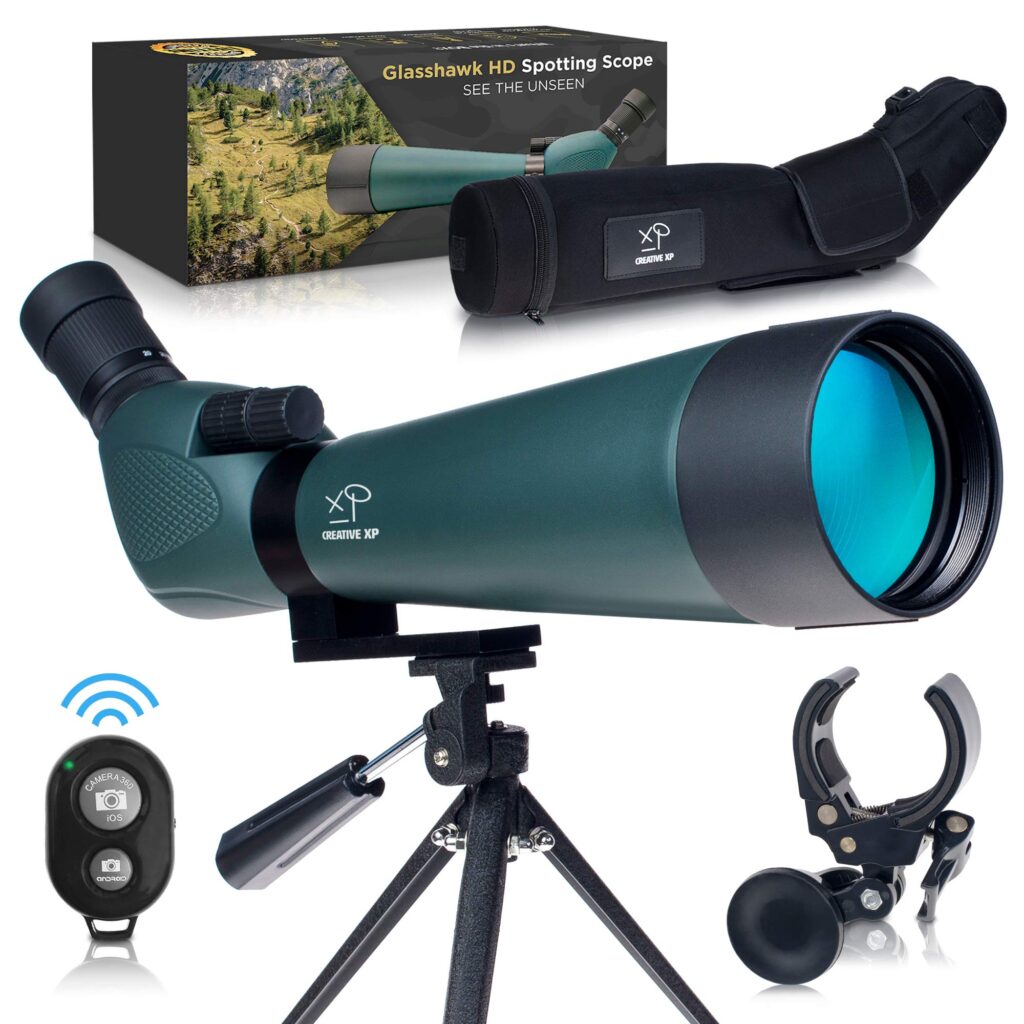
I recommend this CREATIVE XP spotting scope for anyone who wants to explore the night skies with clarity and ease.
Pros
Cons
After spending several nights scanning the heavens, the GlassHawk Scope has proven a reliable companion. The Extra-Low Dispersion (ED) glass really does its job, delivering crisp images of celestial bodies without any noticeable chromatic aberration, even when the magnification is cranked up to 60x. This is no small feat and makes the celestial observation both delightful and detailed.
The dual fine-focus knobs, once you get the hang of them, provide meticulous control, allowing you to dial in on Jupiter’s moons or the rings of Saturn with surprising ease. There’s a definite sense of satisfaction when you can transition from a wide sweep of the Milky Way to a singular, distant star with such precision.
I can’t gloss over the robust build of this scope, either. Having taken it out in dew-heavy evenings and once during a light drizzle, it’s held its own with the waterproof and fog-proof features living up to their promise. While some scopes might require a retreat at the first sign of moisture, the GlassHawk simply soldiers on, providing uninterrupted viewing pleasure.
Nevertheless, I’ve had to contend with the limitations of the included tripod. When nudging the scope to track a planet, I sometimes wished for a sturdier base. Holding the tripod with one hand while adjusting the focus allowed for smoother operation. I should also mention that while the scope’s heft imparts a feeling of durability, it does start to weigh on you during long nights under the stars.
The phone adapter was a hit and miss depending on the smartphone used. While it attached easily to some models, it struggled to accommodate a beefier case, requiring some finessing to align the camera.
In essence, the GlassHawk Scope stands as a superb entry into the world of stargazing. It pushes past its minor quirks with its exceptional visual performance and build quality. The sky may be the limit, but with this spotting scope, it feels a little closer within reach.
Gosky Dual Focusing ED Scope
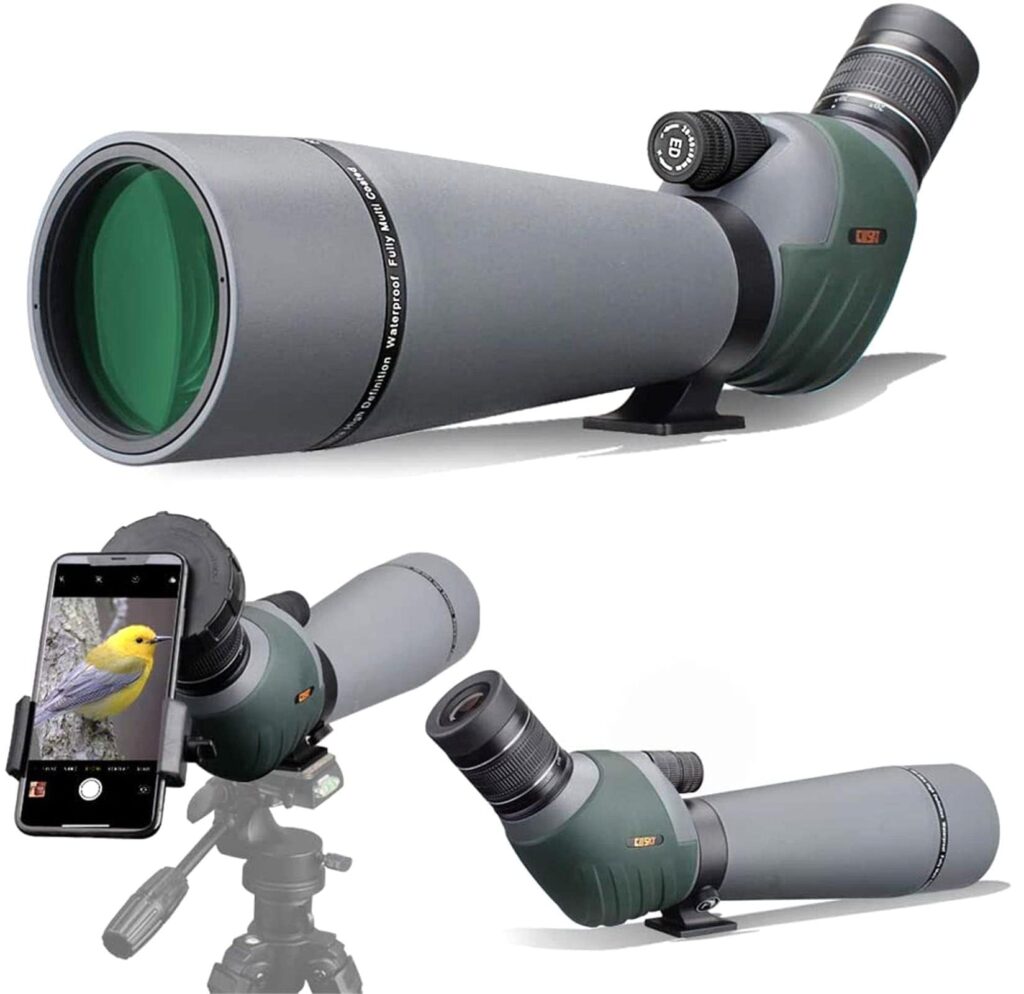
I recommend this scope for amateur astronomers who value clear optics and versatility in their observations.
Pros
Cons
Stargazing last night, the Gosky Dual Focusing ED Scope gave me a new appreciation for celestial objects. The big 80mm lens let so much light in, making the night sky appear rich with detail. Setting it up was intuitive, and I was quickly sweeping the heavens, gazing at nebulae and star clusters.
The dual-speed focus system on this spotting scope was a game changer. I could go from a wide starry expanse to zooming in on the craters of the moon with a quick turn of the fast focus wheel and then fine-tune to crystal-clear details with the slower wheel. It’s like having both macro and micro control at my fingertips.
When it came to endurance, the Gosky scope took the evening chill and dew without any issues. The nitrogen filling and waterproofing mean that a bit of accidental rough weather doesn’t spell disaster. And when I paired it with my smartphone using the included adapter, sharing my astronomical discoveries was a joy—once I got the hang of aligning the camera lens just right.
Even though the scope’s built solid, which is reassuring, it’s not the lightest accessory on my outings. On top of that, at the highest magnification, while the view is still impressive, I noticed a tiny bit of clarity loss at the edges. Overall, the pros far outweigh the cons for me, making the Gosky a trustworthy companion on my night-time nature excursions.
Celestron C90 Mak
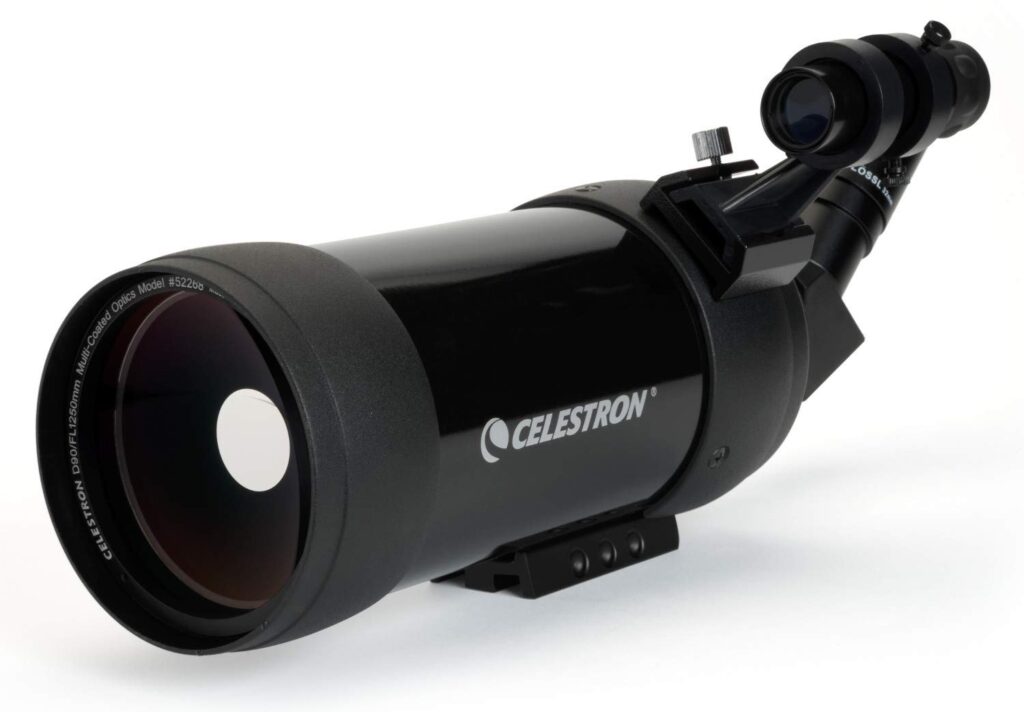
I recommend the Celestron C90 Mak for anyone craving a powerful yet portable spotting scope experience, especially for those keen on astronomy.
Pros
Cons
I recently had the chance to spend some time with the Celestron C90 Mak Spotting Scope under the stars, and it was a genuinely splendid experience. The scope’s Maksutov design is a marvel when it comes to blending portability and optical clarity. Taking it out of its backpack, I was struck by how light it felt, knowing well that often portability comes at the expense of performance – but not this time.
The views it provided were bright and tack-sharp. Even observing from my backyard, the moon’s craters and mountain ranges were etched in exquisite detail against the dark sky. Panning over to Saturn, the rings stood out clearly, crisp and well-defined. As a birdwatcher by day, the scope transitioned effortlessly to terrestrial viewing, allowing me to spot feather details on a perched eagle from a considerable distance.
While I deeply appreciated the precision of the optics and the overall ease of use, I noted that reaching for the manual focus to follow a bird in flight took a bit of practice. The fixed 39x magnification is great for many subjects, but I could see astronomy enthusiasts wanting even closer views of the cosmos. Plus, aspiring astrophotographers may need to purchase additional adapters to fully harness its capabilities as a telephoto lens.
Overall, the Celestron C90 Mak Spotting Scope is a fantastic tool for anyone passionate about peering into the heavens or observing the nuances of nature. With its sturdy build and clear viewing, it’s a worthy companion for all your adventures.
Gosky EagleView 85 HD
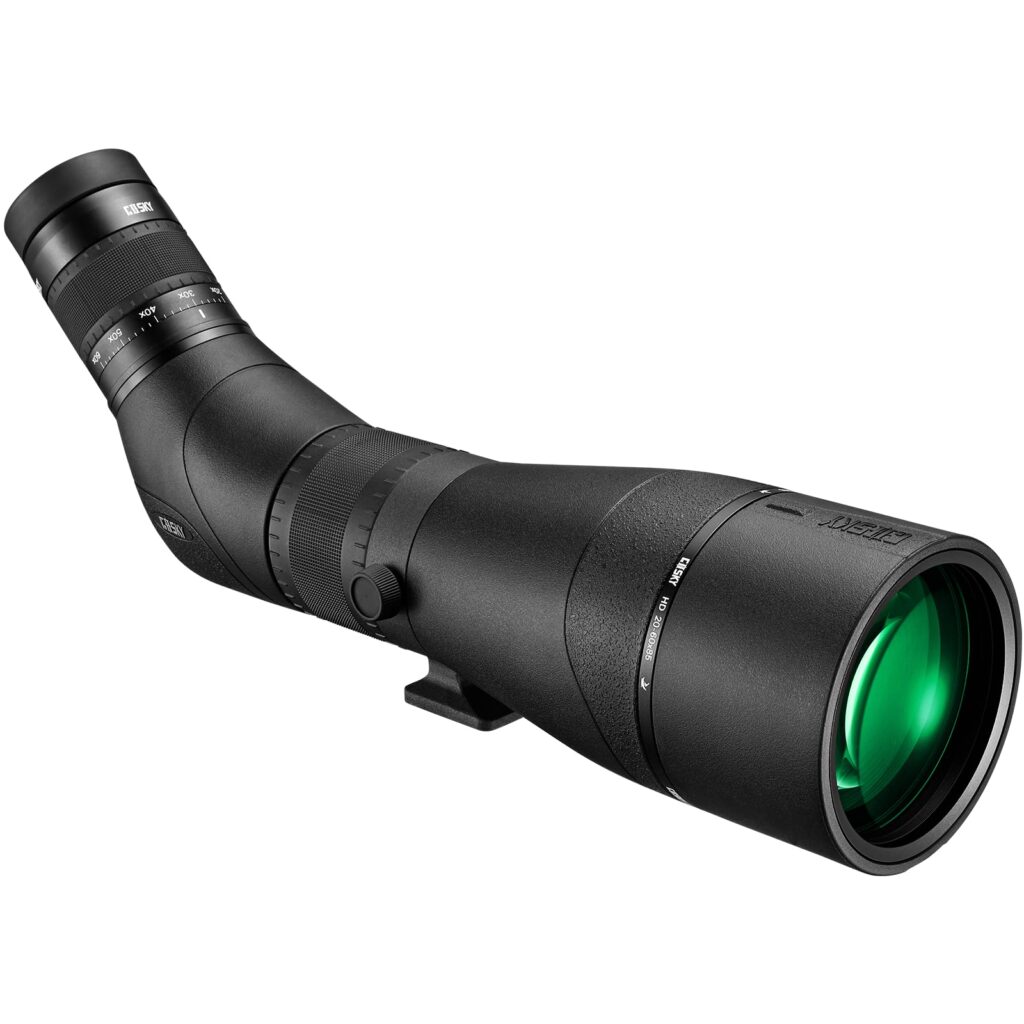
If you’re on the hunt for a spotting scope that brings the stars a bit closer from the comfort of your back yard, the Gosky EagleView 85 HD is a solid pick.
Pros
Cons
When I took the Gosky EagleView 85 HD scope out for a spin, the first thing that impressed me was the field of view. Covering an expansive area, I was able to scan the heavens and lock onto celestial bodies with ease. The 85mm aperture paired with the anti-reflective coatings took in a generous amount of light, essential for any astronomy enthusiast like me looking to gaze at dim stars or distant planets at dusk.
The scope’s ability to zoom from 20x to 60x provided me with the versatility I needed. At the lower end, I enjoyed a wider view, perfect for spotting constellations. As I dialed up the magnification, I could focus on individual celestial wonders, marveling at the crisp details of the moon’s craters. The image quality remained sharp and vibrant throughout the zoom range.
Being able to connect my smartphone to the EagleView 85 HD with the adapter added a new dimension to my stargazing adventures. I snapped pictures of the night sky to share with friends and family, which is something traditional telescopes don’t offer as readily. However, I did notice that the scope’s weight became noticeable during longer sessions. The plastic construction raised some concerns about durability, but it has held up fine in my careful hands. Just remember that it lacks night vision capabilities; you’ll need to rely on natural or nearby light sources for the best experience after sunset.
BEAVERLAB Smart Scope
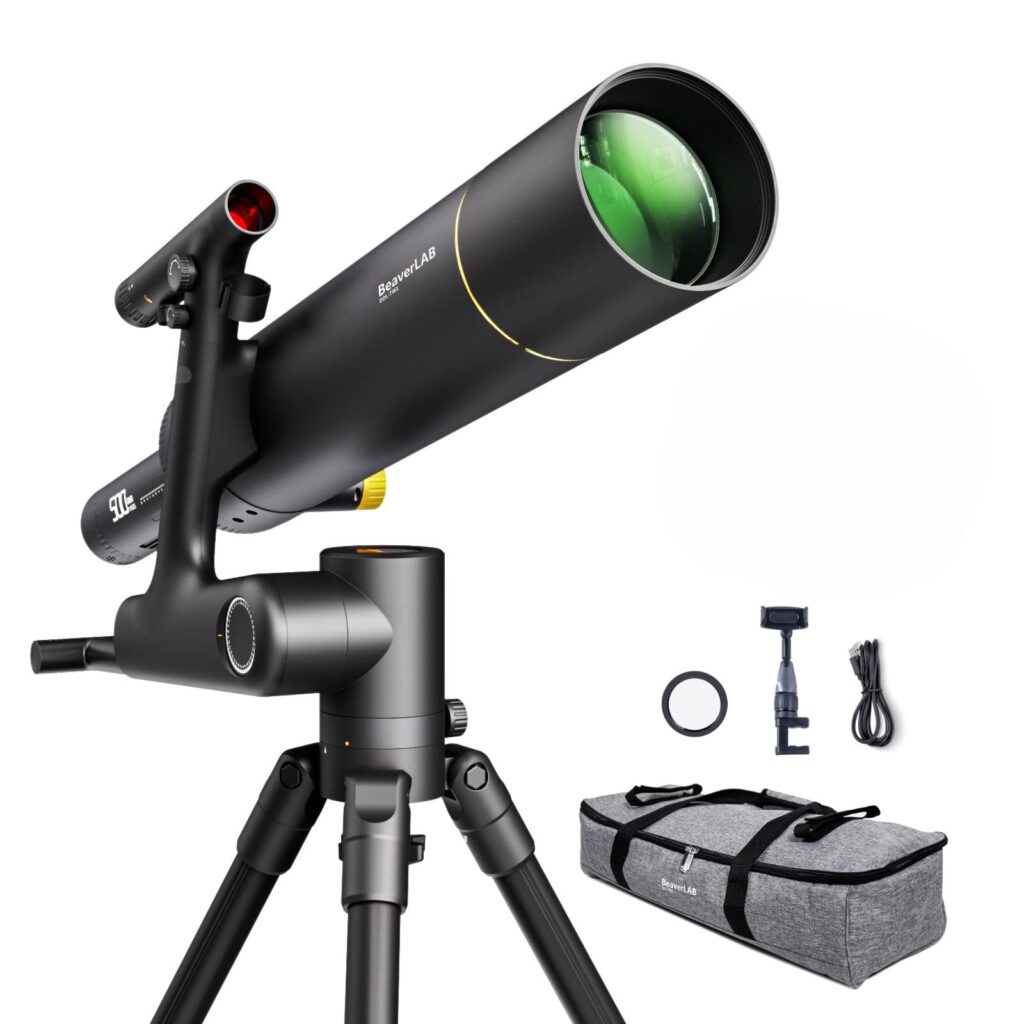
The BEAVERLAB Smart Scope is a must-have for astronomy enthusiasts seeking portable technology to enhance their celestial observations.
Pros
Cons
I recently took the BEAVERLAB Smart Scope out for a night under the stars and it did not disappoint. The sharpness of the images I was able to capture, even at high magnification levels, made it an invaluable tool for my astronomical observations. The compact design meant I could easily carry it to my favorite remote spot without any hassle.
Navigating the telescope’s features felt intuitive even for a first-timer like myself. The absence of any need for an internet connection added to the freedom of stargazing in the wild. Adapting settings through the accompanying app was streamlined and uncomplicated, allowing me to focus on the sky above me.
Despite its positives, I did notice that achieving the sharpest focus required a steady hand and patience, which might be a bit challenging for some users. However, with only a handful of reviews available, it’s difficult to determine if this is a common issue or not. Also, for those planning lengthy observation sessions, the battery-powered nature of the scope is something to be mindful of—ensuring a backup power source is probably a good idea.
Buying Guide
Key Features to Consider
When I’m choosing the best spotting scope for astronomy, I assess various features crucial for a rewarding star-gazing experience. Here’s what I take into account:
- Optical Quality: For me, the optical quality is paramount. High-quality lenses and prisms ensure brighter and sharper images. I look for scopes with fully multi-coated lenses as these maximize light transmission.
- Aperture Size: The size of the aperture determines how much light the scope gathers. A larger aperture allows me to see fainter objects and provides better resolution.
- Magnification: While a higher magnification seems appealing, it must match the aperture to be effective. Unsuitable magnification can lead to unclear images.
- Focal Length: Longer focal lengths mean higher magnification and a narrower field of view. I match the focal length to my intended use.
Build and Design
A good balance between durability and portability is key for me. I prefer a waterproof and fog-proof scope since it offers protection from the elements. An angled design is my choice for comfort during long hours of observation.
Mount Compatibility
The scope should be compatible with a stable tripod or mount to avoid image shake. I ensure that the mounting system is secure and reliable.
Ease of Use
Features like a dual focus knob for fine and coarse adjustment and a zoom eyepiece enhance the user experience. Simplicity in operation is something I won’t compromise on.
Price vs. Quality
I am cautious to weigh the cost against the benefits. Investing in a scope without compromising on essential features is wise, but I also stay within my budget.
| Feature | Importance |
|---|---|
| Optical Quality | Crucial |
| Aperture Size | High |
| Magnification | Match with Aperture |
| Focal Length | Specific to Use |
| Build & Design | Durable & Portable |
| Ease of Use | User-Friendly |
| Price | Balanced Investment |
These parameters guide me to make informed decisions based on practicality and specific astronomical needs.
Frequently Asked Questions
In choosing the right spotting scope for astronomy, it’s important to consider certain features and performance factors, especially for beginners. I will address some common questions related to these aspects below.
What are the key features to look for in a spotting scope for stargazing as a beginner?
When selecting a spotting scope for stargazing, I recommend considering the aperture size (the diameter of the lens), magnification power, and quality of the optical glass. A larger aperture allows more light to enter, which is crucial for viewing dim celestial objects. The magnification should be versatile, and a scope with fully multi-coated lenses offers better brightness and clarity.
How do Celestron spotting scopes, such as the TrailSeeker 100mm, perform for astronomical observation?
Celestron, with models like the TrailSeeker 100mm, delivers high-quality images with its generous 100mm aperture lens. The scope’s multicoated optics enhance contrast and brightness, making it a solid choice for observing the night sky. It’s well-suited for beginners due to its user-friendly features.
Can celestial bodies like planets be clearly observed through a spotting scope, specifically Saturn?
A spotting scope can provide a clear view of celestial bodies, including planets like Saturn. With the proper magnification, a spotting scope can reveal Saturn’s rings and even its largest moon, Titan. However, fine detail on the planet’s surface may not be as visible as through a specialized astronomy telescope.
What are the benefits and limitations of using spotting scopes for astronomical viewing compared to telescopes?
Spotting scopes are portable, easy to set up, and multifunctional for both land and astronomical viewing. They typically have a lower magnification range and smaller aperture compared to telescopes, limiting their effectiveness for deep-sky viewing. For casual observation and easy handling, however, they are highly beneficial.
Which brands are highly regarded for producing top-quality spotting scopes suitable for astronomy?
Brands like Celestron, Vortex, and Swarovski are well-regarded for their high-quality spotting scopes. They offer advanced optics, durable builds, and clear viewing experiences, which are vital for stargazing.
What is the typical range of visibility for celestial objects with a 20-60×80 spotting scope?
With a 20-60×80 spotting scope, one can expect to see a range of celestial objects, from lunar craters to bright planets. The clarity of image will vary with atmospheric conditions, but typically, objects like the rings of Saturn or Jupiter’s major moons can be observed at higher magnifications within this range.

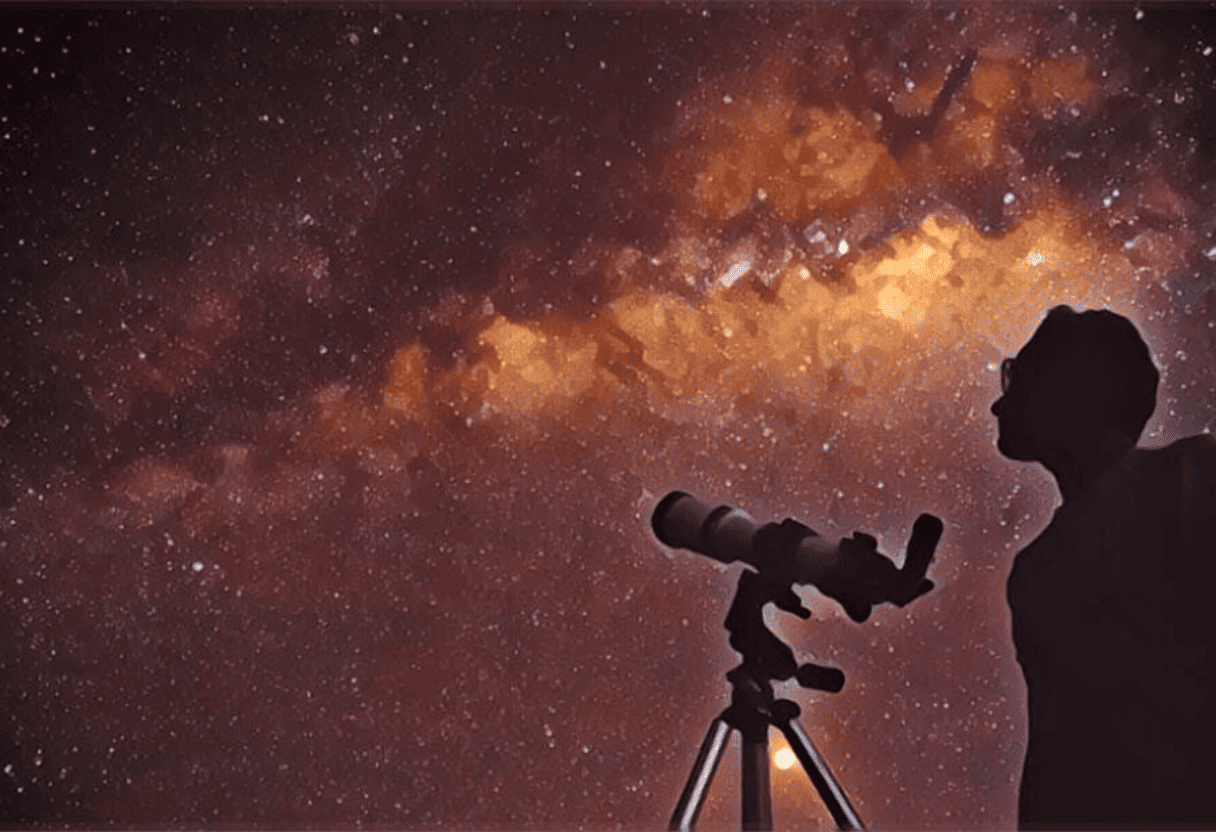
![Celestron NexStar 8 SE Telescope Review [year]](https://observationhobbies.com/wp-content/uploads/2024/01/Celestron-NexStar-8-SE-Telescope-Review-768x525.png)


![Best Binoculars for Stargazing: Top [year] Picks](https://observationhobbies.com/wp-content/uploads/2024/01/Best-Binoculars-for-Stargazing-768x525.png)

